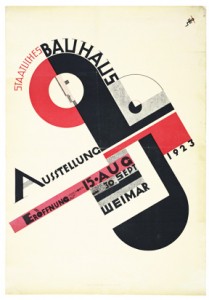
http://www.crestock.com
The Bauhaus movement was an artistic and architectural project that existed in Germany between 1919-1933.It occurred during the Weimar Republic. Its originator, Walter Gropius, was an architecht and admirer of Frank Lloyd Wright.Gropius was responsible for the founding of the Bauhaus School.The central thesis was that mass production was reconcilable with the individual artistic spirit. In addition, an equilibrium could be possible between fine art and applied art. The teachers at the Bauhaus school included painters Lyonel Feininger,Paul Klee and Wassily Kandinsky.
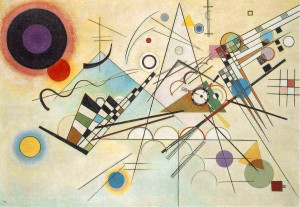
kandinsky
Bauhaus was extremely influential on subsequent develepments in fine art, graphic design, industrial design and typography.The art and graphics were more geometric and carried a greater simplicity of line and form. The aesthetic of modernism was inevitable yet threatening to the classic pre-existing notions of what was moral and what constituted degeneracy. The Bauhaus movement was searching for harmony between function and design. The style was recognizeable by an absence of ornamentation and a rupture with neo-classisim.
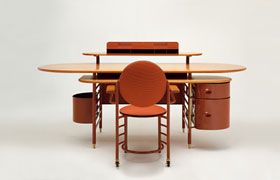 t="180" />
t="180" />Frank Lloyd Wright Design
The Gropius vision contained utopian elements such as art should meet the needs of society, and the diappearance of class distinctions between craftsmen and artists. The ”volk” were ambivalent towards social change,technology and its manifestations in the arts.The Dada movement had stretched the line from ordinary to provocative to shocking and the National Socialist party maintained a cultural policy hostile to modernistic art. Another idealistic belief in Bauhaus philosophy was that the artist should be trained to work with industry . Also, some felt the Bauhaus emphasis on rationality and functionality sacrificed experimentation.
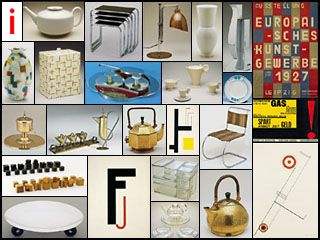
http://www.artsmia.org/modernism
Within the ”green shoots” of what sociologist Karl Popper would term”The Open Society” there were remarkable cultural achievements in post war Germany in all the arts.However, democratic institutions necessary to support individual liberties were fragile and paralyzed by political radicalism, an ingrained social class system ,and feudalistic conceptions.
Gropius saw the potential for art within a period of scientific and technological advancement and regarded a consumer economy built on a model of mass production as inevitable.For Gropius, The understanding was that industrial and consumer goods should be functional, high end and economically consistent with mass production as well as embodying artistic pretension.Emotional expressionism and Dadaism morphed into the ”New Objectivity”.The underlying theme was modernism.
Theodore Adorno would later clarify the threat to the quality arts that the” culture industry ”could pose. Ersatz arts, mass produced and marketed would serve as a pacification to the masses who would not forage beyond the low hanging fruits. The Bauhaus vision had delusions of utopia to believe that true art and capitalism could co-exist.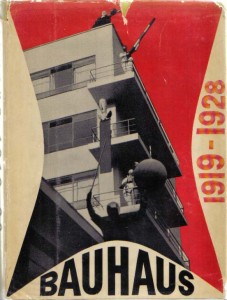
The rise of National Socialism gradually choked the Bauhaus school of funding forcing its closure.The business model of Bauhaus was not viable without state financing and contracts. Hitler’s antipathy to any art form from Impressionism onward appeared absurd. However, NSDAP cultural policy reflected in large part the tastes and prejudices of the upper middle classes and elements of the establishment which constituted Hitler’s power base. NSDAP propagandist Alfred Rosenberg would label Bauhaus as ”Cosmopolitan Modernism” and create public controvery over Bauhaus designed flat roofs or an avant garde metal chair.The ”New Man” morphed into the despised ”Unter-Menschen.”
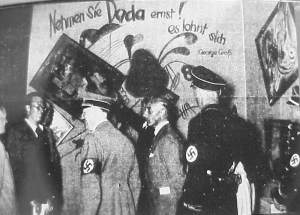
http://wamm.files.wordpress.com
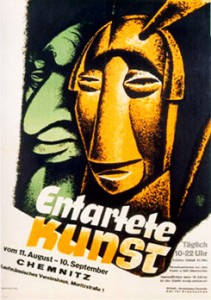
Entartete Kunst (degenerate art exhibit)
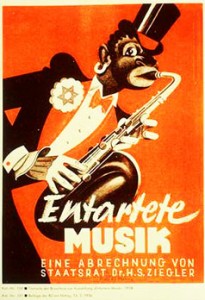
Subsequently, all modern art became labelled ”Entartete Kunst” or degenerate art. Over 4000 pieces of modern art were burned in public bonfires in 1933.Eventually, the NSDAP concluded that burning ,gassing and shooting the the propagators of degenerate art could resolve the problem at its source. Artists fled to exile, among them Walter Gropius. Gropius eventually taught at Harvard and founded a large architectural company. In 1937 The Nazis staged degenerate art and music exhibits which toured the country in mobile museums.



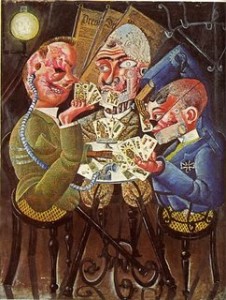



 COMMENTS
COMMENTS